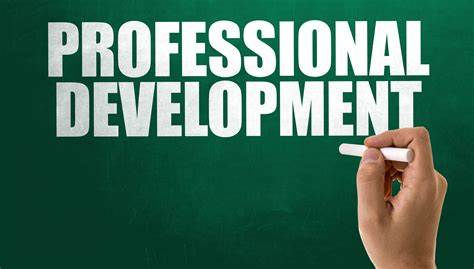The Cascade Effect: Unfolding the Impact of Teacher Professional Development on Student Learning
- Manjeet Sood
- Jul 20, 2023
- 3 min read
Imagine a disturbance in the water, originating from a single droplet, expanding and transforming the entire expanse as it engulfs everything in its path. Imagine teacher professional development as a single droplet, and improvement in student learning as a cascade effect. The correlation between these two variables may appear insignificant at first, but upon closer inspection, a potent correlation emerges that infuses the educational domain with vitality. The power to transform student learning lies in the hands of teachers, and professional development is the magic wand that can make that happen. The educational system must adapt to the dynamic nature of today's society. Teachers, as the builders of our society's future, need to improve their skills and adapt to new circumstances. Here, we explore the many components of professional development for educators and the ways in which they affect student results.
Let's delve deeper into the plethora of professional development opportunities and their profound impact on enhancing student learning
1.Conventional Continuing Education for Employees
Professional development programmes have traditionally relied on workshops, seminars, and lectures to impart knowledge to participants. These programmes, typically run by universities or private consultancies, are designed to improve instructors' pedagogical abilities and topic knowledge. Teachers may create an environment where kids are engaged, curious, and critical thinkers by staying current on educational research and best practices.
2. Harnessing Collective Wisdom
One important part of training educators is encouraging them to work together on projects through PLCs or peer coaching. When educators share the highs and lows of their classroom experiences with one another, they open themselves up to new perspectives and ideas. A culture of innovation is encouraged by this shared knowledge, which has a positive effect on students' academic performance.
3. Mastering Autonomy: Embracing Self-Directed Learning
The age of self-guided professional development has here with the advent of online learning platforms. Here, educators have the freedom to construct their own unique professional development experience by selecting from a wide variety of resources. Teachers can be inspired to become lifelong learners by engaging in this type of professional development, which includes webinars, podcasts, eBooks, and more. As a result, pupils pick up on their energy and become more engaged in their own education.
4. Methods of Action Research
Action research is a type of professional development in which educators actively examine the efficacy of their own instructional practices. It sheds light on the ways in which various pedagogical strategies affect the learning outcomes of their respective student populations. As educators reflect on their practices and make adjustments in light of their findings, they foster a more personalized classroom setting that promotes student motivation and achievement.
5. Mentoring and Orientation Activities
New educators have a great need for mentoring programmes that can help point them in the right way. Teachers who have greater experience in the field can aid others who are just starting out by sharing their knowledge, thoughts, and practical advice with them. Investing in teachers in this way has dual benefits: better classroom results and higher teacher retention rates.
6. Micro-credentials and Badging
Micro-credentials and badges are the newest trend in professional development, and they provide an exciting new approach to advance in one's career. These online certifications are available to educators who can prove their mastery of a given set of teaching practices. They are evidence of a teacher's passion to their vocation and to the success of their students.

7: Plunging into Proficiency: The Impact and Influence of Immersion Programs
Teachers might gain valuable insights into the student's experience by taking part in an immersion programme themselves as a student. Changes in teaching methods and the classroom setting that result from this type of professional development can have a significant impact on students.
Funding teacher's continuing education helps secure our collective future. It's all about giving teachers the tools they need to make a positive impact on the lives of future generations. Every action in this field has a ripple effect on the classroom, making it a place where students are more open to learning.
Comments